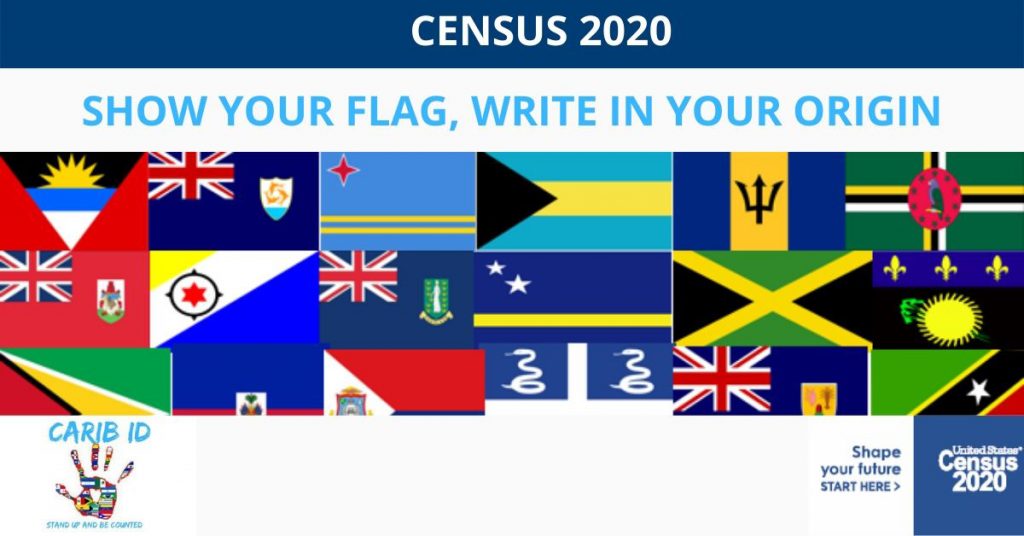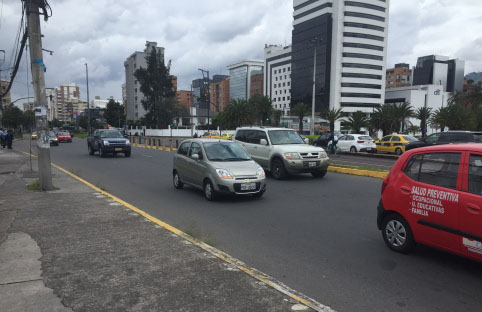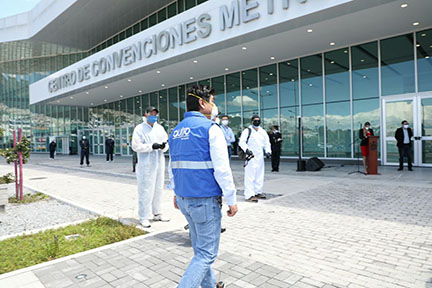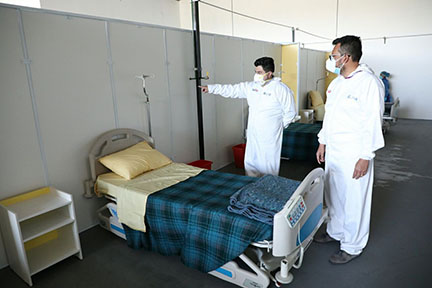
Special To NAN
News Americas, Quito, Ecuador, Fri. May 22, 2020: “We can’t be locked up until December, January or February when there’s a vaccine ready, we have to live with the fact that the country and world has changed,” signaled Ecuador’s Interior Minister, María Paula Romo, recently in an interview, as she expressed the need for the country to move forward.
On May 4th, Ecuador began its next phase in the current coronavirus pandemic to reopen and jump-start a sluggish economy. At the end of April, the country’s President Lenín Moreno announced a plan disguised as a traffic light, which would gradually relax strict in-person business guidelines.
Districts, for example, beginning in the red phase are allowed to open for business but can only make sales online or by telephone. When a county turns to the yellow or green phases, public transit and in-person business can begin to operate at reduced levels slowly normalizing.

Increased traffic in Quito after May 4. Photo: Vincent Ricci
Perhaps, contrary to the president’s wishes after allowing local authorities to make “the final word” due to initial hesitation, all districts chose to begin in the red phase. The majority of Ecuador’s 221 local counties said they’d stay in red – at least until the end of May.
A few days after the beginning of the next phase, an irritated Moreno appeared in a short televised national address, pleading with local emergency task force officials to “make decisions” by saying: “I’m calling on the 221 municipal mayors in the country – open your economies.”

Moreno rarely makes public appearances, but when he does, he focuses on reopening and the need for it. His ministers have championed the president’s demands by advocating the return to work.
In the same interview, Romo cited an incident in the provincial Andean city Ambato where people tried to steal gas canisters used for cooking. She tried to connect the ideas that the closing of markets have left people selling informally in the streets, resulting in insecurity and a growing demand to work. “We must find an equilibrium” like the other counties that have opened, she said.
As the unofficial deadline of the end of May is slowly approaching for counties to make decisions again, some have already moved to the yellow and green phases, while others have made announcements to move forward this week, including the coastal city of Guayaquil, Ecuador’s initial coronavirus epicenter.
The situation has stabilized in Guayaquil and hospital and funeral services are not as overwhelmed as before. But mortality data suggests there were 12,000 additional deaths between March and April compared to last year. As of May 18, the ministry of health has only announced 1,238 COVID related deaths in that particular province.
Other provinces are beginning to gear up as another wave appears to be moving on in the country.
The Pichincha province, where the Ecuadorian capital Quito is situated, is expected to peak in the next week or two. New confirmed cases and deaths have been on the rise with a 103% increase in fatalities between May 11 and 18, according to the El Comercio newspaper.
In addition to bracing for the next wave, Quito’s mayor, a doctor himself, announced a temporary hospital in a large park in the north of the city that can hold up to 370 patients. In the inauguration of the site, Mayor Yunda emphasized the importance of using face masks and following health experts advice, putting responsibility in the hands of residents in the city.
With the installation of a temporary treatment center, this will prevent an influx of patients into the city’s public hospitals, which has already reached its limits this week. One personal contact said intensive treatment units are full.

The pressure will persist as the mayor’s tone has begun to change, being one of the most hesitant leaders in the country to even consider the idea of reopening.
Yunda has been pressured indirectly at the national level when the health minister responded saying: “If I were mayor of Quito, would I reopen? I would say yes.”
The minister justified his answer by referencing a study that was conducted at the end of April, which found that 22% of the population had contracted the coronavirus, and 1 out of every 5 people are infected in Quito.
He went on explaining: “People have already gone out; they have already infected themselves,” as the data proves from the study.
The president and interior minister have also expressed that the number of cases and death toll are in fact much higher than what has been reported.
Ecuador finds itself in a difficult situation as public officials push for the country to open prematurely despite questionable data and possible indications that the virus may be spreading undetected in other regions of the country. Moreover, mounting pressure to reopen Quito as the peak is on the horizon may prove to be disastrous for the capital.

EDITOR’S NOTE: Vincent Ricci is an independent journalist based in Ecuador. He covers human and indigenous rights, social movements, immigration, and politics in Ecuador and Latin America. You can follow him on Twitter @ Vincent__cr and his blog.










